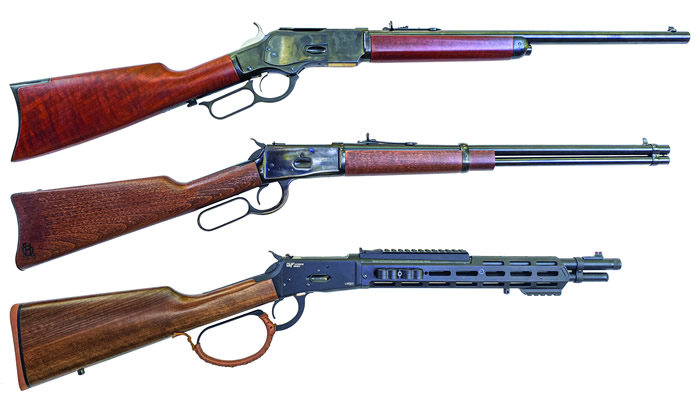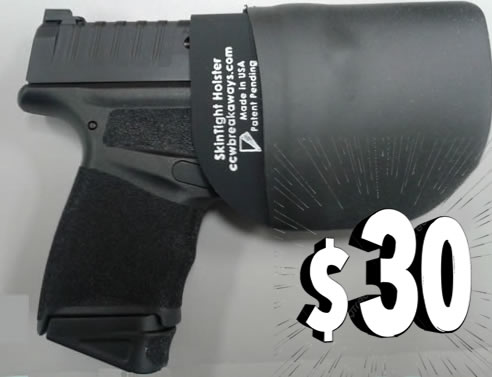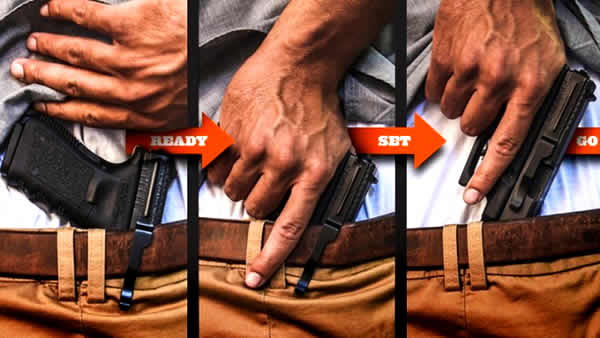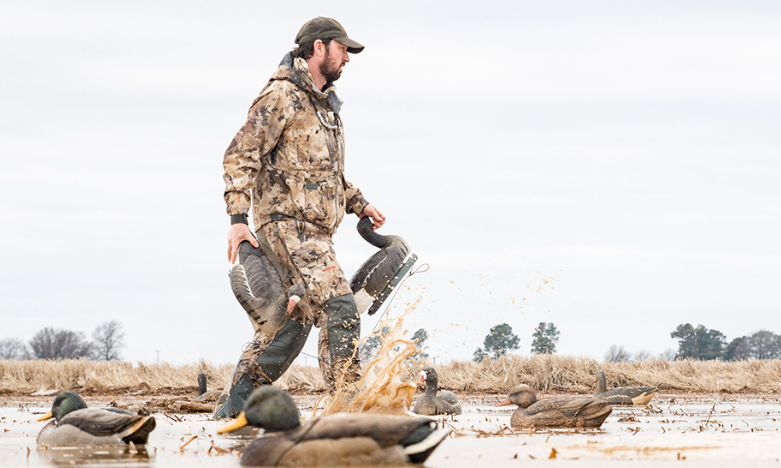A look at PCCs from Cimarron Firearms, Heritage Firearms and GForce Arms
Story and Photos by Frank JardimDo you own a lever-action rifle? If you don’t, the .357 Magnum cartridge is a good reason to take it under consideration. I recently realized that my collector interests in vintage Henry, Winchester and Marlin lever actions somewhat blinded me to their contemporary applications in modern calibers. After testing out a trio of lever guns in .357 Magnum, I’ve reached enlightenment. For over 100 years, lever-action repeaters were the long guns of choice when you needed firepower for hunting and protection. The most popular models of the 1800s were what we would call today pistol-caliber carbines, or PCCs, which in the typical 20-inch-barrel carbine configuration could hold 10 rounds in their tubular magazines. That might not seem like much firepower in the modern era of 30-round detachable magazines, but consider that it is still more than a revolver and twice the capacity of most bolt-action hunting rifles.
These early PCC lever-actions traded the heavy-hitting power and range of the big black powder game cartridges of the day (e.g., .38-55, .45 70, .50-95) for greater ammunition capacity, lighter recoil and faster handling. That is not to say one couldn’t kill buffalo with the .44 Henry rimfire or .44-40, .38-40 and .32-20 Winchester Center Fire cartridges they were mainly chambered in. It was done, but usually from what we would regard today as uncomfortably close range. They were intended to kill game of deer size or smaller, and of course men, inside of 100 yards.

Brazil to closely resemble a Winchester Model 1892 carbine
with a 20-inch barrel and carbine-style banded magazine
tube, forend and butt stock with a heavy sheet metal
buttplate. It is a good value among blued-steel, hardwood
stocked, traditionally styled lever-actions with an MSRP of
$863. Actual retail price appears to be in the $680 range.
I can’t say with certainty how much the taming of the American West had to do with the decline of the lever action PCCs, but it appears that with the lack of hostile Indians or outlaws to fight, their popularity seriously, and permanently, dropped off in the decade before World War II. Tapping into a nostalgia for the Old West that never really went away, the sport of cowboy action shooting revived interest in the old lever-action PCC chambered in easy-to-obtain contemporary .357 Magnum/.38 Special, .44 Magnum and .45 Colt calibers. This revival later included vintage-type lever-actions in big game calibers too, which bled into, and got traction in, the larger community of gun owners interested in recreational shooting, hunting and self-defense.
I GOT INTO the old pistol-caliber lever guns and their long-obsolete original chamberings out of historical interest rather than practical reasons. They were expensive to shoot and a little tricky to handload because of their delicate case mouths but, boy, did they load smoothly thanks to the generous taper of the cases. The ammunition was literally designed for these guns. Over 30 years ago I rationalized buying one of the first Uberti-made replicas of the Winchester Model 1873 in .45 Colt, a straight-walled case that the guns were never chambered in historically. Unfortunately, it never lived up to my expectations. The action had lost its legendary smoothness as the straight-sided case dragged against the chamber walls with every stroke of the lever. The monstrous 255-grain slug wasn’t the flat shooter that the 200-grain .44-40 was, either. Shooting at a distance felt like casting rainbows.
Later I got a gorgeous Miroku-made Browning replica of the Winchester Model 1892 carbine in .44 Magnum that had no shortage of power and range, but cycling the action was even more tortured due to the increased case expansion in the chamber from the magnum’s high pressures. Again, I had a gun that looked like a vintage lever-action, but it didn’t feel like one and that took the fun out of it for me. Twice burned, it would be another three decades before I tried one
chambered in .357 Magnum. I wish I’d done it sooner. I would have been turned off by the inevitable straight sided case drag on the chamber walls, but I would eventually be won over. Back in those days, .38 Special and .357 Magnum brass was as common on range floors as 9mm is today and it was free for the taking.

While Jardim says this is fine for hunting, he hates them for target shooting.
Still, he was able to shoot great groups with them from the bench at 50 yards.
It was economical for me to shoot these calibers because I already handloaded them and these lever guns could handle both. Sooner or later I know I would try some .38 Special in the gun and realize that the shorter case cycles more smoothly, the nickel-plated cases commonly used by police chambered more smoothly than brass ones, and the .38 Special’s moderate pressures don’t make the fired cases clingy in the chamber. In short, the .38 Special/.357 Magnum lever gun was a winner in ways the .44 Magnum and .45 Colt models weren’t.
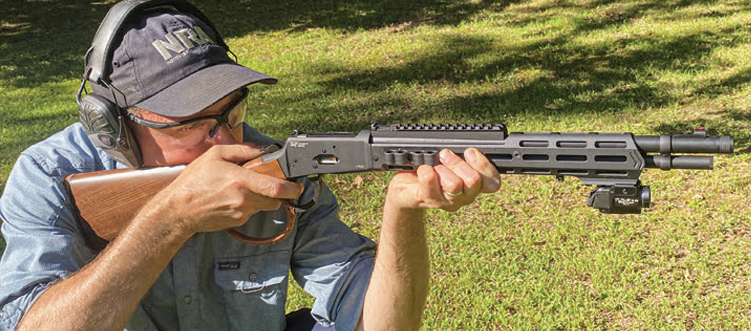
LTAC 357 (gforcearms.com) is the lightest, shortest and most dramatically modernized
gun of this trio with an aluminum receiver and M-Lok front handguard. It weighs 5
pounds, 9 ounces empty and measures 34.5 inches overall.
NOW LET’S JUMP to the present and my recent experiences with three newly manufactured guns, all modeled, to varying degrees of historical accuracy, on the traditional Winchester Model 1873 and 1892 lever-actions. These were the most popular designs in their day and likewise in the present. The guns I tested included a very historically authentic Cimarron Firearms John Russell Winchester Model 1873 with an uncommon button magazine factory option; a classically Old West-styled Heritage Firearms M92 Carbine based on the Winchester Model 1892; and a full-tactical, aluminum-receiver, optics-ready GForce Saddlehorn LTAC 357 based around the short and handy Winchester Model 1892 “trapper” carbine.
The new guns retain the design merits, and flaws, the originals had. When paired with a handgun of the same caliber, one ammunition type can be shared between the two. They are sleek and compact thanks to their tubular magazines, but reloading is a slow, one-round-at-a-time process through the loading gate on the right side of the receiver. Some bullet designs, especially those with exposed soft lead tips, can get marred during loading and actually jam up the process. Unlike modern semiauto PCCs, which are nearly idiot-proof in their function and manual of arms, a lever action requires some physical finesse. Fortunately, it is not hard to master.
Lever-actions cycle best when held upright and worked with manly vigor. Baby them and you’ll induce a jam. Taking some time to learn the loading and cycling rhythm of a lever gun is a prerequisite to reliable operation. What the modern lever guns have that the originals didn’t are better, stronger materials, modern high precision manufacturing processes, and better-quality, more consistent ammunition. In my opinion it’s the ammunition part that makes the .357 Magnum lever-action PCC relevant. Today’s semiautomatic PCCs are chambered in today’s automatic pistol calibers: .380 ACP, 9×19 mm (9mm Luger), .40 S&W, .45 ACP and 10mm. The most popular caliber by far for a PCC is 9mm. The most powerful, and expensive, is the 10mm.

Comparatively few handguns are chambered in 10mm simply because it is too much for most shooters to handle comfortably. You could say the same about .357 Magnum, but revolver shooters must be a tougher breed because the .357 Magnum, alongside the .38 Special, are the most popular calibers for centerfire revolvers. A matching .357 Magnum/.38 Special lever gun PCC is a natural companion for the revolver lover; it appears more versatile on the top end of the power curve than all the semiauto chamberings with the possible exception of 10mm.
I TESTED THE three .357 Magnum factory loads in a 6-inch-barrel revolver and 20-inch-barrel lever-action carbine and the difference was impressive with increases in velocity sometimes exceeding 550 feet per second. The semiautomatic pistol cartridges I had comparative data for weren’t nearly so spectacular, showing gains less than 200 fps from a 16-inch barrel, and much less in the case of .45 ACP. Already something of a beast among handgun cartridges, the .357 Magnum from a 20-inch-barrel lever-action PCC becomes a lot more potent and a more practical killer inside 100 yards than it ever
was in any of its original 19th century chamberings and with performance superior to all of its modern semiauto PCC peers except 10mm.

where you like on the forend. It grips the rounds so tightly that there is no chance of losing them on the trail – or getting them out in a hurry if you need them, says Jardim.
The Federal Premium 130-grain Hydra-Shok JHP averaged 1,553 fps from the revolver with 696 foot-pounds of energy at the muzzle, and 2,139 fps from the rifle with 1,321 foot-pounds of energy at the muzzle. Black Hills Ammunition’s 158-grain JHP averaged 1,206 fps from the revolver with 510 foot-pounds of energy at the muzzle, and 1,774 fps from the rifle with 1,104 foot-pounds of energy at the muzzle. The Winchester 110-grain JHP averaged 1,327 fps from the revolver with 430 foot-pounds of energy at the muzzle, and 1,776 fps from the rifle with 770 foot pounds of energy at the muzzle.
Other .357 Magnum loads tested through a 4-inch revolver and a 16.5-inch-barrel lever gun produced the following results: From the revolver, Black Hills Ammunition’s 127-grain, all-copper Honey Badger load averaged 1,375 fps and 696 foot-pounds of energy at the muzzle. From the carbine, it averaged 1,822 fps and 936 foot-pounds of muzzle energy. From the revolver, Federal American Eagle 158-grain JSP averaged 1,241 fps and 540 foot-pounds of energy at the muzzle. From the carbine, it averaged 1,818 fps and 1,159 foot-pounds of muzzle energy. From the revolver, Winchester Super X 125-grain JHP averaged 1,452 fps and 585 foot pounds of muzzle energy. From the carbine, it averaged 2,195 fps and 1,337 foot-pounds of muzzle energy. I observed that it was common for a .357 Magnum load fired from a revolver to
have more muzzle energy than a 9mm load fired from a 16-inch-barreled PCC. The only thing a semiauto PCC has over a .357 Magnum lever action PCC is rate of fire and speed of reloading.
In my opinion, all the guns I tested showed very good accuracy. I noticed that their exterior barrel profiles looked identical to those chambered in .44-40, which makes for a heavier, stiffer barrel on a .357 bore gun. That could be part of the reason these guns shot so well. Magnum loads fired from the bench at 50 yards produced average five shot groups ranging from 1.82 to 3.63 inches with the average group size of all the loads tested coming in at (a very respectable for iron sights) 2.54 inches. If what you’ve read here has piqued your interest and you decide to get a .357 Magnum lever-action, I’m warning you now that it could very well lead to taking up handloading and bullet casting to keep them fed. The guns are pleasant and fun to shoot with minimal recoil, and .38 Special and .357 Magnum are easy to handload. Finally, regardless of where they are made, lever-actions are as American as Ford trucks and “The Star-Spangled Banner.” ★


